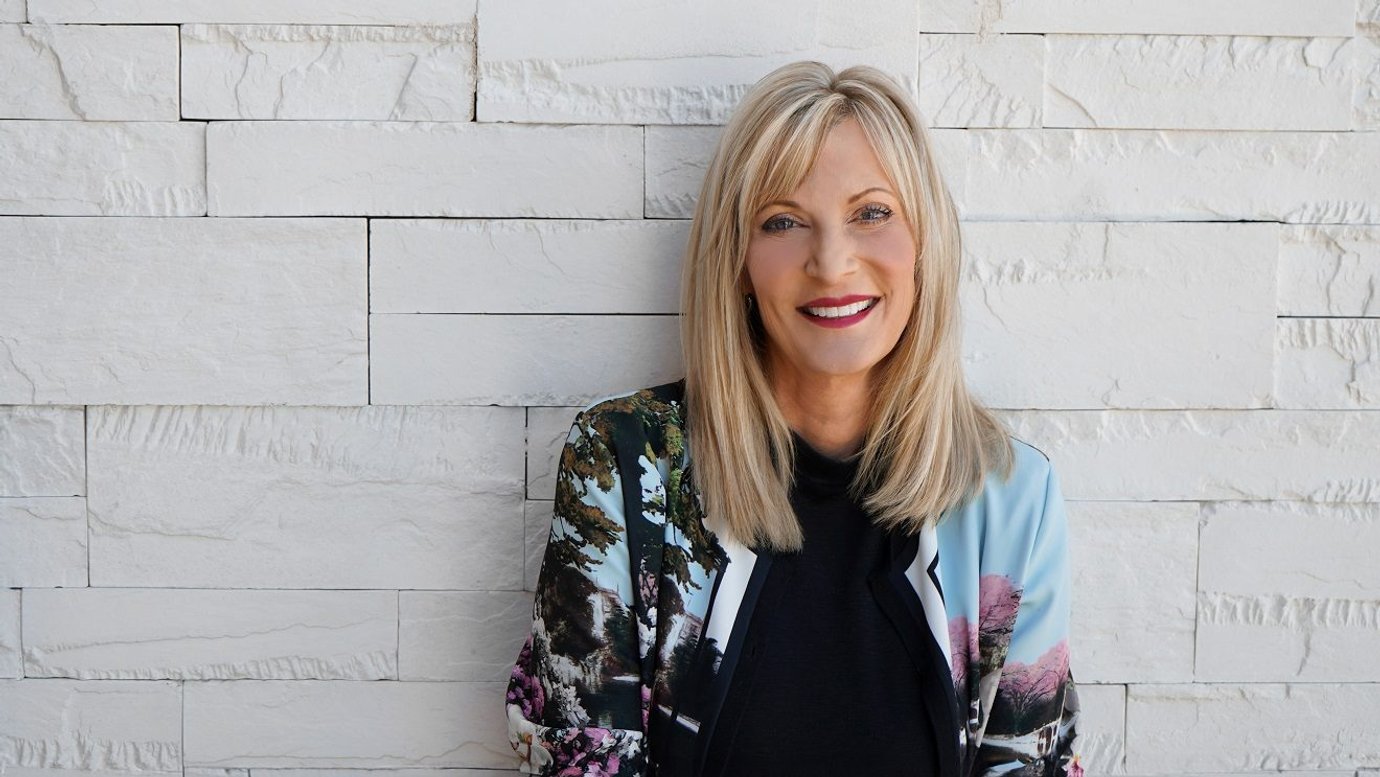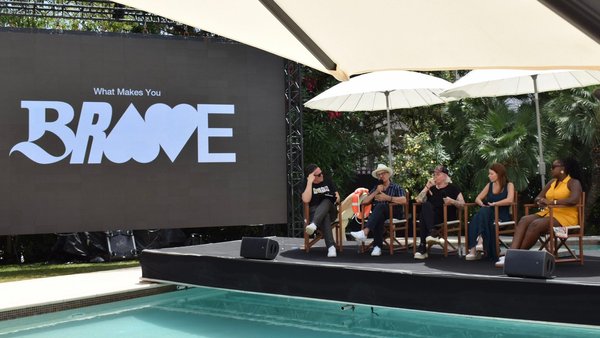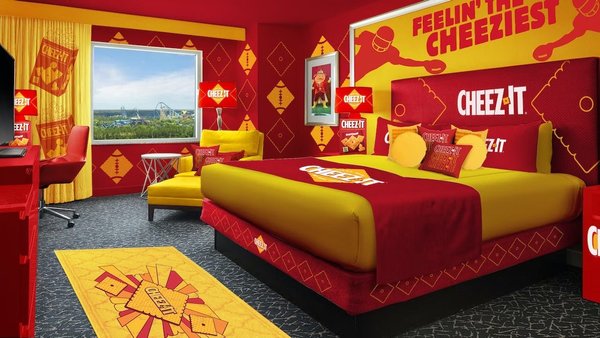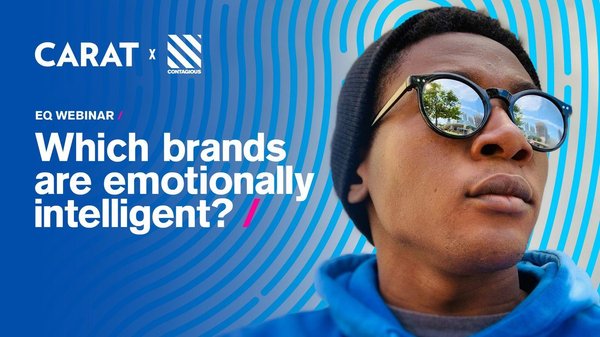Promoted content
Debbi Vandeven on the Titanium Lions and future of creativity /
VML’s Debbi Vandeven talks to Contagious about AI's impact on creativity, the need for inclusivity, and how genuine creativity stands out in a tech-driven world.
Caroline Akinyele
/
In the wake of Cannes Lions 2024, Contagious caught up with Debbi Vandeven, the global chief creative officer at VML, and president of this year’s Dan Widen Titanium Lions jury.
She shared with us her insights into this year’s standout awards entries and the future of creativity, and her reflections provide an astute and experienced view on the state of the industry, the evolving standards of creative excellence, and the surprising absence of both AI and Gen Z.
As president of the Titanium Jury in 2024, what guidance did you give your fellow jurors? What did you want them to focus on when evaluating the entries?
As president of the 2024 Titanium Jury, I guided jurors to follow the core idea behind the Titanium award — work that stops you in your tracks and shapes the industry's future. We focused on whether each piece represents the best of today’s industry and reflects significant trends.
Looking back at past winners, like the BMW films or Dumb Ways to Die, it’s clear that each captured a pivotal moment in advertising history. The evolution from traditional ads and jingles to pieces like the Nike Fuel Band showed how our industry began integrating technology and customer experience, this was similar for us at VML.
I urged the jurors to consider work that defines a current moment in time, like Domino’s emoji ordering, which highlighted shifts in consumer interaction, or Fearless Girl, which became a symbol beyond advertising after the Hilary Clinton loss. These pieces made a real-world impact, which is what I wanted the jurors to focus on — work that resonates deeply with people and propels the industry forward.
Lastly, I reminded them that in today's diverse landscape, with categories for everything from creative data to sustainability, our task wasn't just to judge these works in isolation but to evaluate if they truly stand out and lead the industry. It’s a more challenging process now, as the bar has been raised, but our goal remains to identify ground breaking work that will be remembered and talked about for years to come.
Do you think the kinds of campaigns that win Titanium Lions are relevant and instructive for the average copywriter, art director, or strategist?
Yes, absolutely! If you examine the shortlist, you'll see that most of these pieces have also excelled in other categories, often achieving gold or top honours. They truly represent the best of the best.
For instance, look at the Xbox Everyday Tactician campaign, which goes beyond traditional campaigns to create real-life impact. If you compare the Gran Turismo movie to the work done for Xbox, you'll see similarities in how gaming experiences are changing real lives. Similarly, The Move to -15 aims to lower shipping emissions and make a global difference. The Meet Marina campaign is another beautiful example, showing how B2B work can be both creative and impactful. This year, about half of the Titanium shortlist had a B2B component, reflecting a significant shift in creativity.
I hope these examples inspire young creatives to see that exceptional work can come from any category, whether B2B or otherwise. It's all about generating truly human insights and ideas. So yes, these Titanium-winning campaigns should be both instructive and motivating for everyone in the industry.
Why did you choose Doordash as the winner? What did it demonstrate that other campaigns didn’t?
We chose DoorDash as the Titanium winner because it demonstrated exceptional innovation and execution that set it apart from other campaigns. Initially, DoorDash was strong but not necessarily the frontrunner. However, its final presentation was outstanding and showcased the extensive effort and collaboration involved.
What made DoorDash stand out was its ability to transform a typical product demo into something extraordinary. While product demos are often mundane, DoorDash’s campaign turned the Super Bowl into a major event by showcasing their capability to deliver anything — not just food, but a wide range of products. This was particularly impressive given the logistical challenges and last-minute hurdles they faced, including dealing with NFL regulations.
The campaign was also notable for its strategic use of cultural moments and its creative approach to overcoming significant obstacles. The work not only demonstrated innovation but also showed a high level of bravery and collaboration between the client and agency.
By the time we reached the final vote, DoorDash’s campaign was unanimously supported by the jury. It was a standout example of how to push boundaries and achieve results, making it a perfect fit for the Titanium Lion. This should inspire creatives to embrace bold ideas and take risks, demonstrating that even seemingly impossible projects can lead to ground-breaking work.
Titanium Lion-winning work is supposed to get people to stop in their tracks and reconsider the way forward. What did this year’s crop of winners make you consider about the direction the ad industry is headed?
This year's Titanium winners highlighted some key trends and directions for the ad industry.
One significant insight was the emphasis on bravery and innovation, particularly in B2B work. There was a noticeable shift towards targeted creativity as a business driver and clients who are willing to take risks, like those pushing for sustainability or creating breakthrough innovations.
Another trend was the integration of gaming into real-world applications, as seen in campaigns like Ford’s driving simulator project, for learning to drive again after an accident. This demonstrates how gaming can push boundaries and drive real-life advancements.
Overall, the direction seems to be moving towards more daring, insightful work that leverages technology and creativity to make a real difference.
AI was noticeably absent from the top of the winners list this year. Why do you think that was?
It’s so crazy that AI didn’t dominate the winners list this year. Maybe because it’s still evolving and not yet a central force in creative work, but you’re starting to see it. While we had some projects using AI, the industry isn’t awarding based on the use of AI alone. You wouldn’t award something in gaming, just because it was a game. The core idea still needs to be strong. AI is a tool that can enhance a great idea, rather than being the main focus.
For example, last year's standout was AKQA's AI-driven Serena Williams campaign, which won because the idea was exceptional and AI supported it. The key takeaway is that AI should complement a compelling concept, not replace it, so we’ll see.
Did you notice any trends among the entrants? Any ideas or formats that seemed to crop up again and again?
This year, inclusivity was a prominent trend among the entries. We saw a lot of work focused on various aspects of inclusivity, such as Down syndrome, deafness, race, and gender. These themes appeared frequently, though not all made it to the top prizes and that goes back to the core idea.
One standout piece from Canada that I loved was Assume That I Can, which had a strong impact and sparked debate. While inclusivity remains a significant trend, the core idea of the work is what ultimately matters. We also saw notable work in B2B as mentioned, but the focus on inclusivity is definitely a positive development.
Was there any kind of work that you’d have liked to have seen more of among the entries?
I would like to continue to see more work focusing on inclusivity, particularly gender-related projects. As a female leader at VML, promoting inclusivity is very important to me, and our agency always prioritises it.
The First Speech piece stood out and won a Grand Prix, reflecting the current global political climate and its impact on journalism. Given the political context worldwide, it will be interesting to see if next year's entries will feature more work in this space, along with more inclusive projects.
How do you feel about the state of advertising after judging this year’s Titanium winners?
I feel that advertising is still very, very creative and has bounced back from the challenges of COVID. There’s a renewed sense of freedom in how and where people work, which benefits creativity.
However, the industry faces challenges with cost-cutting and changing client expectations (which AI might help with). Clients are increasingly focused on winning awards and are more involved in the process, making events like Cannes more business-oriented than before. This shift can make things a bit more competitive.
Despite these challenges, clients are more open to innovative ideas that differentiate them. My hope is that we continue to see exceptional work and that more clients remain engaged and excited about creativity.
What makes an ideal Cannes Lions jury, do you think? Who should be on them, in terms of experience and disciplines, and who shouldn't?
An ideal Cannes Lions jury should be diverse in experience and disciplines. Having a mix of creatives, including those with a history of winning awards, is important to maintain high standards of creativity. Including clients on the jury can also be beneficial, as they bring a different perspective.
However, it’s crucial to ensure that juries don’t lose sight of creativity, even in categories like data. Additionally, given the focus on younger audiences like Gen Z, having someone from this demographic in the jury room could give their opinion and provide valuable insights. I’ve been watching case studies with my daughters and they’ve commented, ‘That’s not gonna reach Gen Z’. This is important because sometimes the work targeted at Gen Z may not resonate with older jurors so including a group of younger voices could enhance the jury’s understanding and evaluation of such campaigns.
Want more of the same? /
We don’t just write about best-in-class campaigns, interviews and trends. Our Members also receive access to briefings, online training, webinars, live events and much more.




